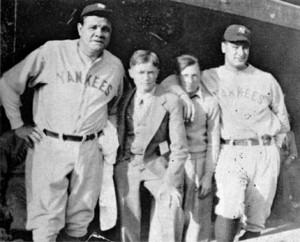A Brief History of South Orange
Vegetable farms, livestock, a few small basic shops, a diverse population and a wonderful climate paint a picture of the 1806 landscape when South Orange became a township. Over the next hundred years, South Orange grew from a farming community into a bustling community that became home to businessmen who built large comfortable homes for their families.
In the mid-1850s, dependable rail service and the Newark, Montrose & South Orange Horse Car Company made South Orange accessible to people who lived in large cities. Soon wealthy businessmen began bringing their families to South Orange to spend summers at the Mountain House Spa. The town’s mountain air was seen as a “cure” and was considered to have “life-giving currents.” South Orange provided a perfect backdrop for a variety of healthy outdoor activities.
Orange Lawn Tennis Club was organized in 1880 on 10 acres in Montrose Park. Eight grass courts and two earth courts provided recreation for its membership. Expanding membership forced Orange Lawn to move to larger space and in 1916, it moved to its present site on Ridgewood Road.
South Orange residents enjoyed other sporting activities including football, golf, basketball and baseball. On October 29, 1929, baseball icons Babe Ruth and Lou Gehrig played in an exhibition game at Cameron Field. The packed 12,000-seat grandstand held spectators who watched as South Orange defeated New Brunswick 7 – 6.
The first school was built in 1787 and over the next one hundred years, schools and educational programs expanded. By the end of the 19th-century Columbia High School was home to 790 students. The 27 teachers earned an average annual salary of $720.
The popular tunes of 1913 were considered to promote animalistic excitement and had a rhythm “from the wilds of barbarism that stirred the pulse.” Students soon ditched the waltz and polka and adopted the bunny hug, turkey trot, fox trot and shimmy. These outrageous dances prompted the Board of Education to take drastic action and it promptly banned risqué dances and decreed that only polite dances would be acceptable at sanctioned school functions.
The 1920s marked a rapid expansion in school building all over town and additions to Columbia High School accommodated the growing high school student population. The 1929 edition of the Encyclopedia Britannica recognized the floor plan for Columbia High School as a superior layout for a public school.
Located in South Orange, Seton Hall University, the oldest diocesan university in the United States, was founded in 1856 and opened its doors to a handful of male students. The 1872 freshmen enrollment ballooned to 500 students from 17 states and foreign countries. By 1937 Seton Hall was established as a university and marked the first matriculation of women students. In 1968, Seton Hall became fully coeducational.
Today South Orange retains much of its original character. Gas-service lamps, installed in the early 1800s that still line the streets of South Orange were once fuelled by whale oil. Several neighborhoods feature late-architectural styles of Tudor, Colonial Victorian, shingle and stick homes that feature a number of sweeping porches that hint at the summer afternoon tea parties of the nineteenth-century.
The town’s diverse population exist as one unit that is devoted to a strong educational and value system for its children, a safe friendly neighborhood for its independent seniors and a cohesive community that works together to preserve South Orange’s past and build its future.


